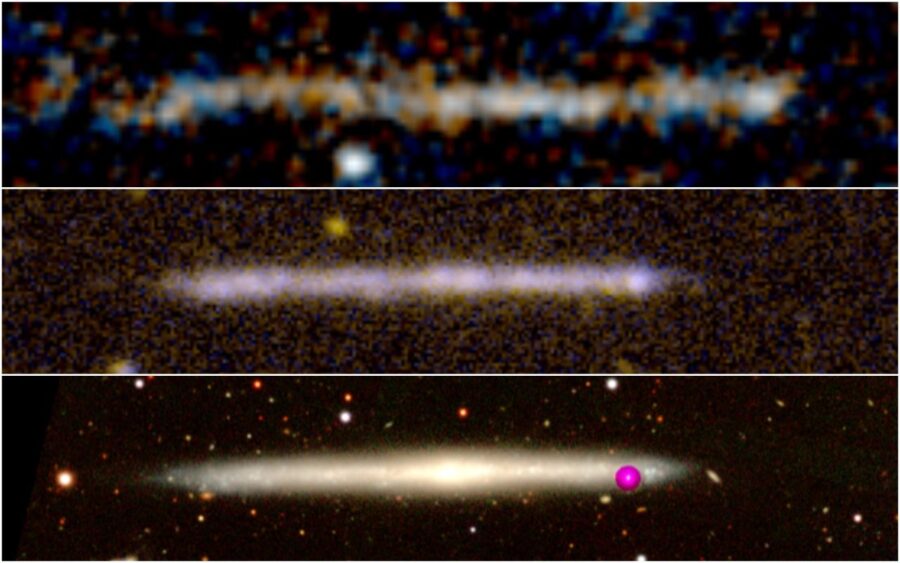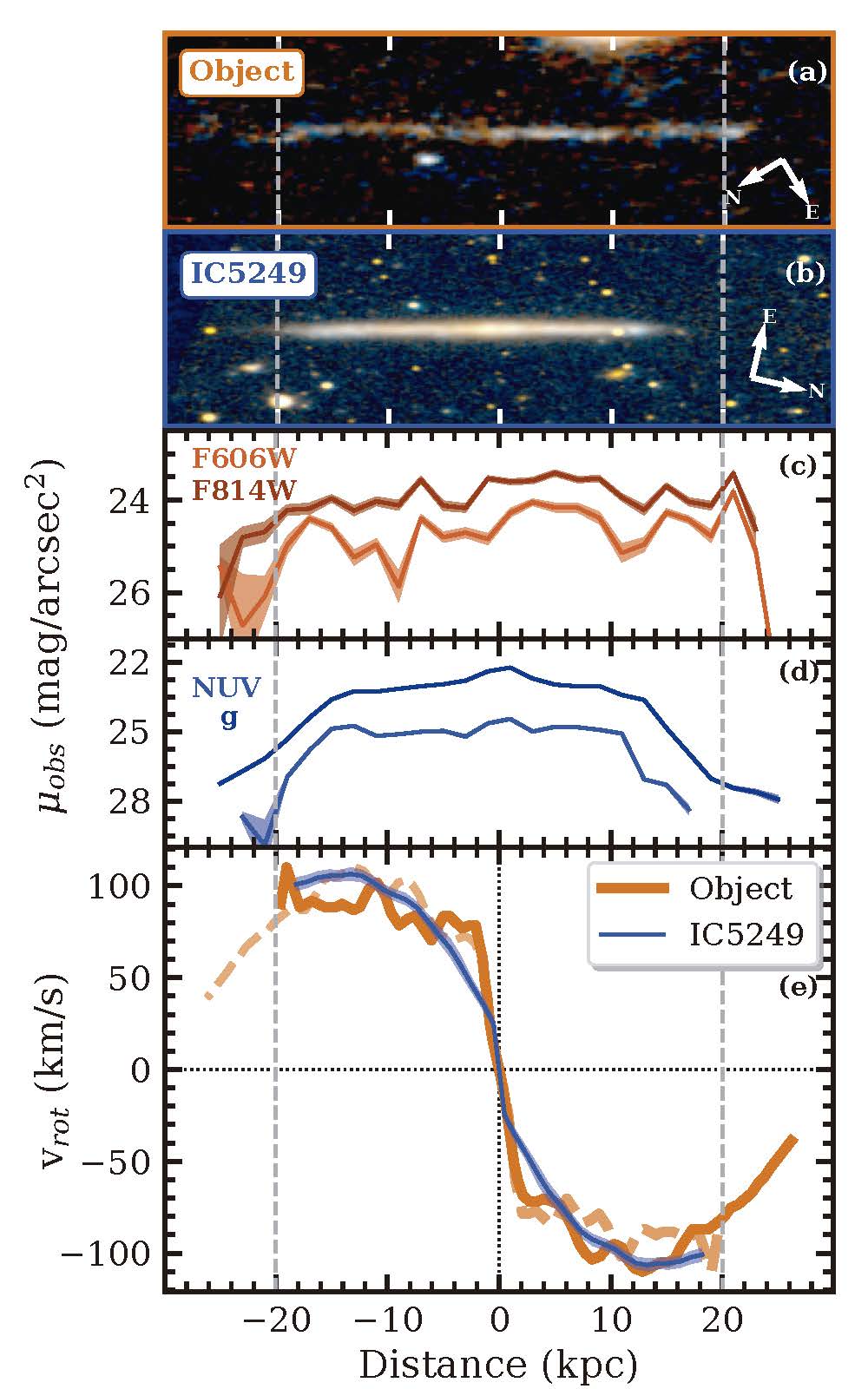An unusual streak of stars thought to have formed in the wake of a wandering supermassive black hole might just be a spiral galaxy seen edge-on.

Hubble Space Telescope
A weird line of stars previously thought to have formed in the wake of a supermassive black hole escaping its host galaxy might instead be a common spiral galaxy seen edge-on, a new study proposes.
Earlier this year, Pieter van Dokkum (Yale University) and colleagues were working with images from the Hubble Space Telescope when they spotted a weird trail of stars, longer than the Milky Way, emerging from a distant galaxy. They proposed that a collision between galaxies had ejected the supermassive black hole at the core of one of them. As it plowed through gas around the galaxy, its extreme gravity triggered star formation in its wake.
It's possible for black holes to escape in this fashion, but circumstances have to be just right for them to reveal their presence. Black holes themselves are dark, and even their influence on surrounding gas is expected to be small. Jorge Sánchez Almeida (Institute of Astrophysics of the Canaries, Spain), who led the new study, explains that density of new stars in a black hole’s wake is only expected to increase by one-thousandth of what was there originally. The stream of stars, on the other hand, is much denser than expected; its mass is 100 million times that of our Sun.
Taking a closer look at the original publication, Sánchez Almeida and his colleagues realized that a plot comparing the stars’ velocity and the position looked an awful lot like what they’d expect from a rotating spiral galaxy.
They then compared the position-velocity plot with that of a known spiral galaxy with similar size and mass. “Basically, I plotted the two graphs and put one on top of the other,” says team member Mireia Montes (Institute of Astrophysics of the Canaries, Spain). “They are identical to each other.”

IAC / Sanchez Almeida et al. / Astronomy & Astrophysics 2023
These stars’ behavior are characteristic of a spiral galaxy’s pinwheel rotation, in which the stellar speed balances the galaxy’s own gravitational attraction. According to Sánchez Almeida, a trail of stars forming in the wake a supermassive black hole shouldn’t rotate in this way.
“From our point of view, this is a killer of the original interpretation,” says Sánchez Almeida. “We still expect supermassive black holes to go for a stroll in galaxy halos, but this is simply not a good example.”
Nevertheless, van Dokkum thinks his interpretation is still valid. He argues that the spiral galaxy interpretation has its own problems, such as the near-perfect alignment of the feature with the core of the neighboring galaxy. He also notes an apparent connection between the star stream and the nearby galaxy, appearing as a few pixels of emission in a new image gathered by the Very Large Telescope in Chile. Both the stellar trail and the galaxy are at the same distance, and this connection between them “basically rules out that the two objects are independent, and this is why we gave the edge-on galaxy interpretation a low probability in the first place,” says van Dokkum.
Also, the object in the original Hubble images doesn’t look perfectly linear. However, Sánchez Almeida and his team think that’s because it’s a very distant object. Star-forming regions are bright at ultraviolet wavelengths, but due to the galaxy’s distance and the shift in wavelength caused by the expanding universe, they appear in visible light instead and give the galaxy a wiggly appearance.
“My attitude is that it is merely a candidate runaway black hole until we find direct evidence for the black hole itself,” adds van Dokkum. He thinks answers will come soon. This summer Hubble will look at this stellar stream again. The James Webb Space Telescope will, too. “If there is a runaway black hole buried in the tip of the wake then it could have ionized gas swirling around it, and JWST is so powerful that it could detect it,” van Dokkum says. But even then, he notes, interpreting that detection would still require making some assumptions.
 1
1









Comments
Yaron Sheffer
May 18, 2023 at 5:22 pm
But of course. A very useful tool in science is helping us once again: Occam's Razor. The number of outlandish or outrageous "discovery" claims in astronomy has sky rocketed in recent years. They should have been excised with OR sooner.
You must be logged in to post a comment.
You must be logged in to post a comment.